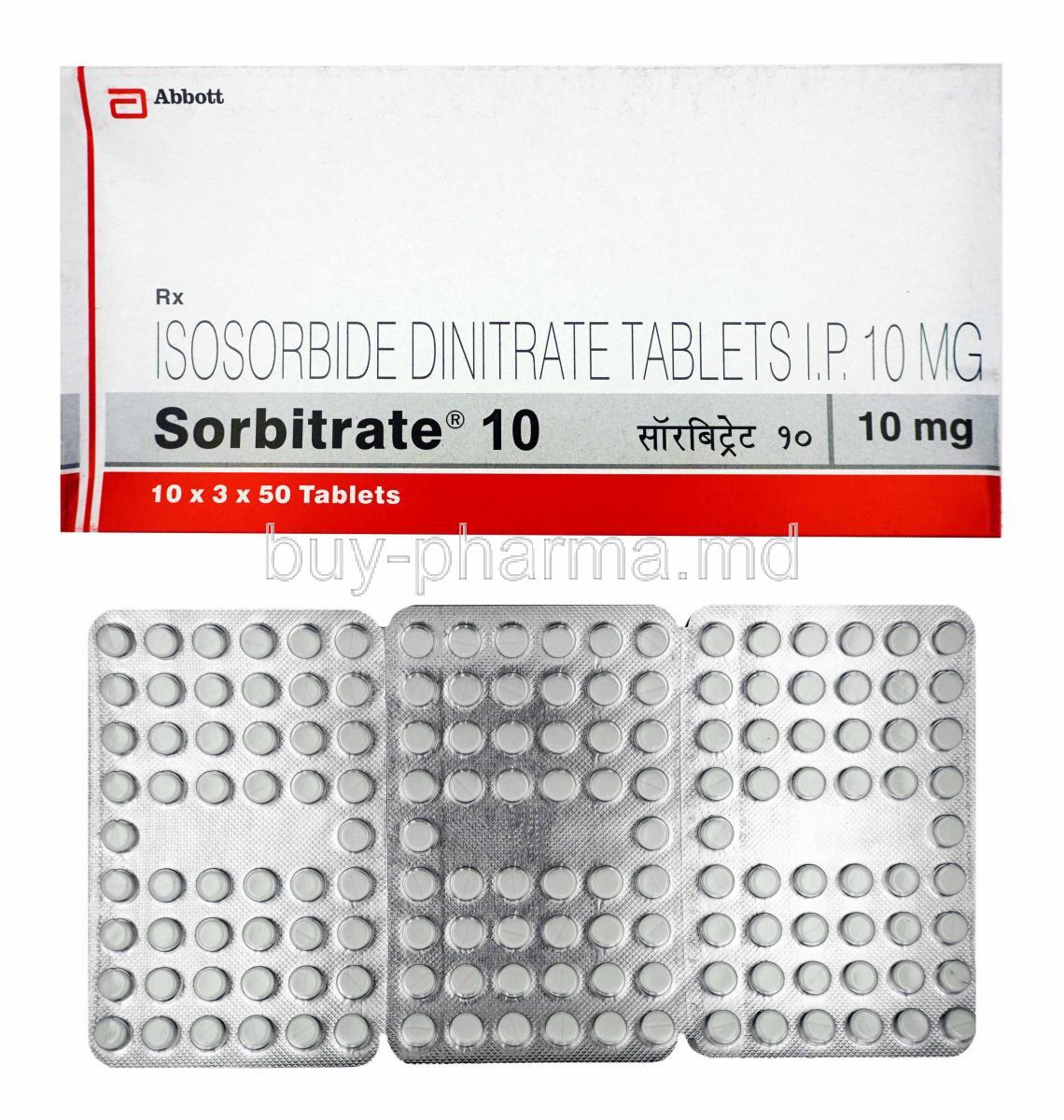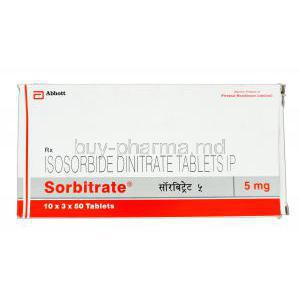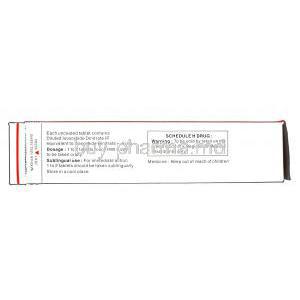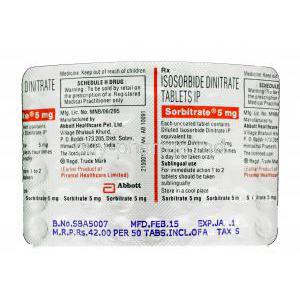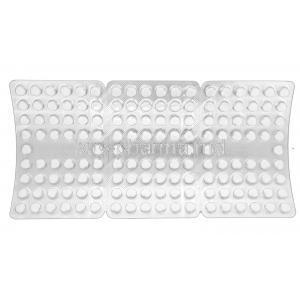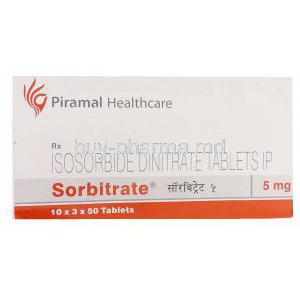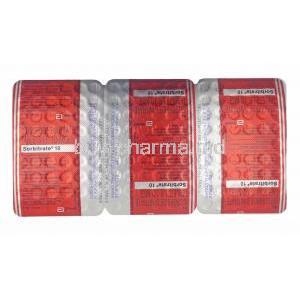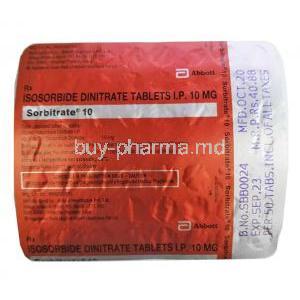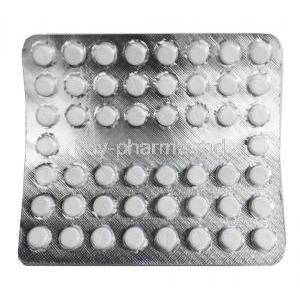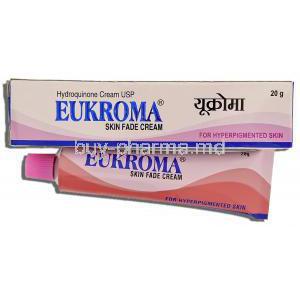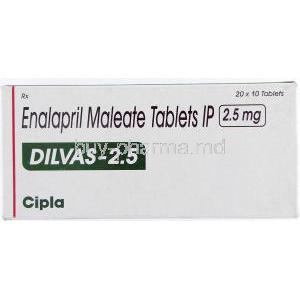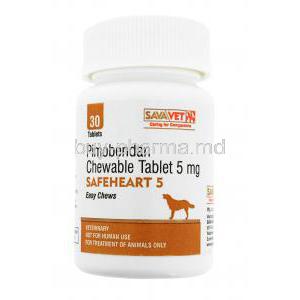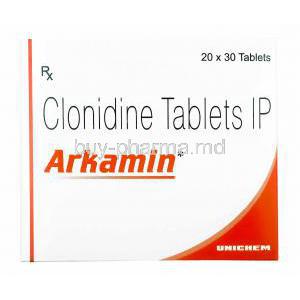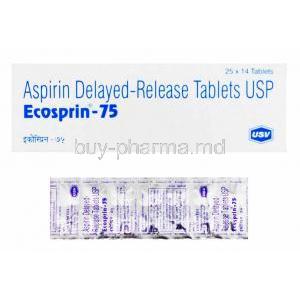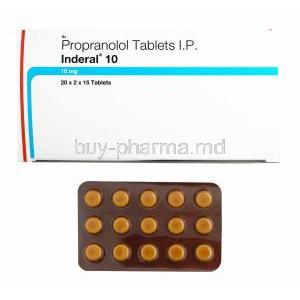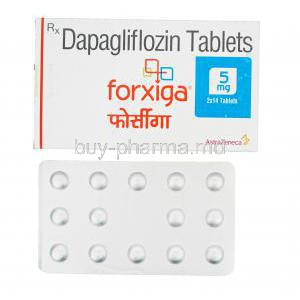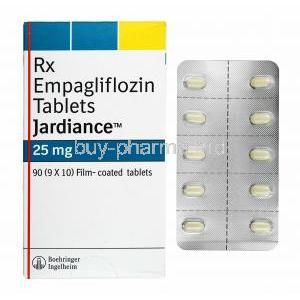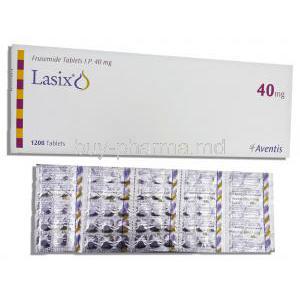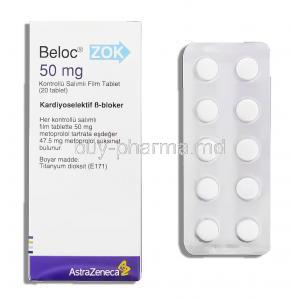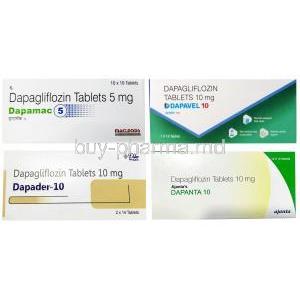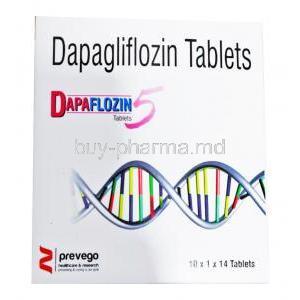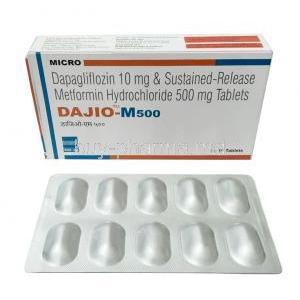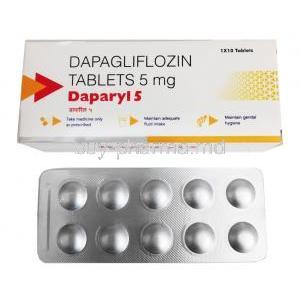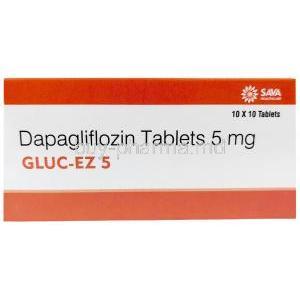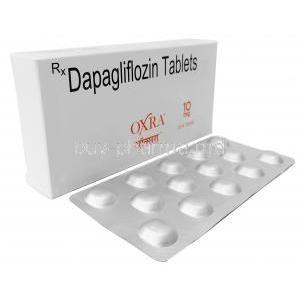1. Introduction
1.1 Overview of Sorbitrate and Isosorbide Dinitrate
Sorbitrate, containing Isosorbide Dinitrate, is a potent nitrate medication primarily indicated for the prevention and management of angina pectoris and chronic heart failure. By promoting vasodilation, it enhances coronary blood flow and oxygen delivery to the myocardium. The drug belongs to the nitrate class of vasodilators and is widely prescribed for individuals suffering from ischemic heart conditions.
1.2 History and Development of Nitrate Therapy
The therapeutic use of nitrates dates back to the late 19th century, following the discovery of nitroglycerin’s remarkable effects on chest pain. Isosorbide Dinitrate emerged as a safer and longer-acting alternative, marking a breakthrough in cardiovascular pharmacotherapy. Its role expanded rapidly in modern cardiology due to its efficacy and ease of administration.
1.3 Pharmacological Classification and Therapeutic Importance
Isosorbide Dinitrate belongs to the class of organic nitrates, functioning as a nitric oxide donor. Its pharmacological importance lies in its dual capacity to alleviate anginal pain and reduce cardiac workload, thereby improving the quality of life in patients with chronic heart disease.
1.4 Brand Names and Global Availability
Sorbitrate is marketed globally under various brand names such as Isordil, Sorbitrate Retard, and Isoket. The drug is widely available in multiple strengths and dosage forms, ensuring accessibility across international healthcare systems.
2. Composition and Formulations
2.1 Active Ingredient: Isosorbide Dinitrate
The primary active constituent in Sorbitrate is Isosorbide Dinitrate, a nitrate ester with vasodilatory effects mediated through nitric oxide release.
2.2 Available Dosage Forms
Sorbitrate is available in several pharmaceutical forms to cater to varying therapeutic needs:
- Immediate-release tablets for rapid angina relief
- Sublingual tablets for acute anginal episodes
- Extended-release formulations for sustained prevention
- Injectable solutions for hospital or emergency use
2.3 Excipients and Inactive Components
Inactive ingredients may include lactose, starch, talc, magnesium stearate, and cellulose derivatives. These excipients assist in maintaining tablet stability and enhancing absorption consistency.
2.4 Comparison with Related Nitrates
Compared to Isosorbide Mononitrate, Sorbitrate demonstrates a shorter half-life but faster onset. While Nitroglycerin acts rapidly for acute attacks, Isosorbide Dinitrate is preferred for long-term prophylaxis.
3. Mechanism of Action – How Sorbitrate Works
3.1 Conversion to Nitric Oxide and Vasodilation Mechanism
Upon administration, Isosorbide Dinitrate undergoes enzymatic conversion to nitric oxide (NO), a critical signaling molecule. NO stimulates smooth muscle relaxation in vascular walls, leading to vasodilation and reduced myocardial oxygen demand.
3.2 Effects on Coronary Arteries and Myocardial Oxygen Demand
The drug increases coronary artery diameter, facilitating enhanced perfusion to ischemic regions. Simultaneously, it decreases venous return, lowering cardiac preload and overall myocardial oxygen consumption.
3.3 Impact on Preload and Afterload Reduction
By dilating both venous and arterial systems, Sorbitrate decreases preload (ventricular filling pressure) and afterload (resistance to ejection), improving cardiac efficiency and reducing anginal discomfort.
3.4 Molecular Pathway: Cyclic GMP Activation
Nitric oxide activates guanylate cyclase, increasing cyclic guanosine monophosphate (cGMP) levels. Elevated cGMP triggers smooth muscle relaxation, a process vital to the therapeutic effects of nitrates.
4. Medical Uses and Indications
4.1 Approved Therapeutic Uses
- Angina pectoris – prevention and symptomatic treatment of chest pain
- Heart failure – used as adjunct therapy to improve cardiac output
- Post-myocardial infarction – reduces cardiac strain and improves perfusion
4.2 Prevention of Coronary Artery Spasm
Sorbitrate alleviates coronary vasospasm, particularly in patients with variant (Prinzmetal’s) angina, restoring adequate blood flow through constricted vessels.
4.3 Relief of Exercise-Induced Angina Attacks
When taken prophylactically, the drug minimizes the risk of angina during exertion by enhancing oxygen availability to the myocardium.
5. Off-Label and Experimental Uses
5.1 Management of Pulmonary Hypertension
In certain cases, Sorbitrate is used to lower pulmonary artery pressure by promoting selective vasodilation.
5.2 Raynaud’s Phenomenon and Digital Ischemia
Nitrate-induced vasodilation helps restore blood flow in patients with cold-induced vasospastic disorders such as Raynaud’s phenomenon.
5.3 Esophageal Spasm and Gastrointestinal Ischemia
The smooth muscle relaxant properties provide symptomatic relief in esophageal motility disorders and ischemic gastrointestinal conditions.
5.4 Peripheral Vascular Diseases
Sorbitrate can improve peripheral circulation by reducing vascular resistance in compromised limbs.
5.5 Cluster Headache Prophylaxis and Chronic Pain Syndromes
Experimental evidence suggests nitrates may alleviate cluster headaches by modulating vascular tone within cerebral arteries.
6. Dosage and Administration
6.1 Standard Adult Dosage Guidelines
Typical adult dosage ranges from 5 mg to 40 mg taken two to three times daily, depending on clinical response and tolerance.
6.2 Sublingual vs. Oral vs. Extended-Release Administration
Sublingual tablets act within minutes for acute relief, while oral and extended-release forms provide sustained prevention over several hours.
6.3 Dose Titration and Nitrate-Free Interval
To prevent tolerance, a nitrate-free period of at least 8–12 hours daily is essential. Gradual dose adjustments enhance therapeutic efficacy.
6.4 Missed Dose and Discontinuation Protocol
If a dose is missed, it should be taken promptly unless the next scheduled dose is near. Sudden discontinuation should be avoided to prevent rebound angina.
6.5 Special Considerations in Chronic Angina Management
Long-term therapy requires careful balance between efficacy and tolerance, often combining Sorbitrate with beta-blockers or calcium channel blockers.
7. Side Effects
7.1 Overview of Adverse Reactions
Most side effects stem from vasodilation and decreased blood pressure. They are generally transient and dose-dependent.
7.2 Common Side Effects
- Headache due to cerebral vasodilation
- Dizziness and flushing
- Postural hypotension and lightheadedness
- Nausea and reflex tachycardia
7.3 Less Common and Serious Side Effects
- Syncope and orthostatic hypotension
- Rare cases of methemoglobinemia
- Hypersensitivity or dermatologic reactions
8. Drug Interactions
8.1 Interaction with Phosphodiesterase Inhibitors
Concurrent use with sildenafil, tadalafil, or vardenafil is contraindicated due to the risk of fatal hypotension.
8.2 Combined Use with Antihypertensives and Calcium Channel Blockers
Synergistic hypotensive effects may occur; close blood pressure monitoring is advised.
8.3 Alcohol and CNS Depressants
Alcohol amplifies vasodilatory effects, leading to enhanced dizziness and fainting episodes.
8.4 Interference with Ergot Alkaloids
Nitrates may antagonize the vasoconstrictive actions of ergot derivatives, diminishing their therapeutic effect.
8.5 Potential Interaction with Anticholinergics and Diuretics
Concurrent use may alter hemodynamic balance, warranting dosage modification under supervision.
9. Warnings and Precautions
9.1 Risk of Severe Hypotension and Syncope
Overdose or sensitivity may cause excessive hypotension, dizziness, or syncope, especially upon standing abruptly.
9.2 Avoidance of Abrupt Withdrawal
Sudden cessation may precipitate rebound angina; dose tapering is recommended under medical supervision.
9.3 Tolerance Development and Nitrate-Free Interval Importance
Continuous exposure reduces therapeutic responsiveness. Implementing daily nitrate-free intervals maintains efficacy.
9.4 Caution in Patients with Anemia or Head Trauma
Reduced oxygen-carrying capacity or increased intracranial pressure may exacerbate adverse outcomes in such individuals.
9.5 Effects on Driving and Operating Machinery
Due to potential dizziness and blurred vision, patients should avoid hazardous tasks until their response to treatment is known.
10. Contraindications
10.1 Absolute Contraindications
Certain clinical conditions render the use of Isosorbide Dinitrate (Sorbitrate) strictly contraindicated due to potential life-threatening effects:
- Concurrent PDE-5 inhibitor use (e.g., sildenafil, tadalafil, vardenafil) can cause catastrophic hypotension due to synergistic vasodilation.
- Severe anemia or circulatory shock—the drug may further compromise oxygen delivery and perfusion in critically low states.
- Acute myocardial infarction with low filling pressures—reduction in preload can precipitate cardiovascular collapse.
10.2 Relative Contraindications
Use caution when prescribing Sorbitrate under the following conditions:
- Hypertrophic cardiomyopathy—nitrate-induced venodilation may exacerbate outflow obstruction.
- Increased intracranial pressure—further cerebral vasodilation can aggravate neurologic symptoms.
- Hypovolemia or dehydration—the drug’s vasodilatory action may intensify hypotension and dizziness.
11. Careful Administration
11.1 Patients with Hepatic or Renal Impairment
Patients with compromised liver or kidney function should receive individualized dosing. Reduced metabolism and excretion may elevate plasma levels, leading to enhanced effects or toxicity. Periodic monitoring of liver enzymes and renal function is advised.
11.2 Individuals with Orthostatic Hypotension History
Those prone to orthostatic hypotension should be counseled to rise slowly from sitting or lying positions. The vasodilatory nature of Sorbitrate may accentuate postural dizziness and increase the risk of falls.
11.3 Monitoring Requirements During Long-Term Therapy
Chronic use requires vigilant surveillance to prevent nitrate tolerance. Routine blood pressure checks, periodic cardiovascular evaluation, and symptom monitoring help ensure therapeutic stability.
11.4 Gradual Dose Adjustment in Sensitive Populations
Initiate treatment at the lowest effective dose and titrate gradually. Sensitive individuals—especially those with frail constitutions or autonomic dysfunction—require slower adjustments to minimize adverse reactions.
12. Important Precautions and Patient Education
12.1 Recognizing Early Signs of Overdose or Hypotension
Patients should be educated to recognize warning signs such as:
- Severe or throbbing headache
- Blurred vision or dizziness
- Rapid heartbeat or fainting sensation
Prompt medical intervention can prevent complications.
12.2 Importance of Adherence and Timing Consistency
Therapeutic success depends on consistent dosing intervals. Irregular intake disrupts nitrate plasma levels, diminishing its preventive benefits and risking tolerance or rebound angina.
12.3 Avoiding Alcohol and Hot Weather Exposure
Both alcohol and excessive heat amplify vasodilation, heightening the likelihood of hypotensive episodes. Patients should stay well-hydrated and refrain from alcohol during treatment.
12.4 Steps to Manage Nitrate Tolerance
To mitigate tolerance:
- Incorporate a daily nitrate-free interval (8–12 hours).
- Avoid unnecessary dose escalation.
- Alternate with non-nitrate antianginal agents if required.
12.5 When to Seek Immediate Medical Attention
Emergency care is required if the patient experiences persistent chest pain unrelieved by the medication, severe hypotension, visual disturbances, or syncope. Sudden cessation without guidance should be avoided.
13. Administration to Special Populations
13.1 Elderly Patients
- Enhanced sensitivity to hypotension: Older adults exhibit increased vascular responsiveness, necessitating lower initial doses.
- Dose reduction and fall risk management: Caution is warranted to prevent dizziness-induced falls; supervision during early therapy is recommended.
13.2 Pregnant Women and Nursing Mothers
- Pregnancy category and safety profile: Limited human data; use only if potential benefits justify the fetal risk.
- Potential fetal risks and benefits: High-dose exposure may compromise placental perfusion; however, controlled use can support maternal cardiovascular stability.
- Excretion in breast milk: Trace amounts may pass into milk; alternate therapies should be considered during lactation.
13.3 Children
- Lack of established pediatric safety: Clinical data on children are insufficient to determine efficacy or appropriate dosage.
- Use only under specialist supervision: Administration in pediatric patients should occur under cardiologist direction with careful monitoring.
14. Overdosage and Emergency Management
14.1 Symptoms of Overdose
Overdose manifestations include severe headache, pronounced hypotension, tachycardia, flushing, and possible collapse. Cyanosis may indicate methemoglobinemia.
14.2 Acute Management and Supportive Care
Immediate management consists of:
- Placing the patient in a supine position with legs elevated
- Administering oxygen and intravenous fluids for circulatory support
- Continuous hemodynamic monitoring
14.3 Gastric Lavage and Activated Charcoal Use
If ingestion occurred recently, gastric lavage and activated charcoal can help reduce systemic absorption of the drug. These procedures should be performed under medical supervision.
14.4 Role of Methylene Blue in Methemoglobinemia Treatment
In rare cases of methemoglobinemia, methylene blue (1–2 mg/kg IV) acts as an antidote by restoring hemoglobin’s oxygen-carrying capacity. Supportive oxygen therapy may be concurrently indicated.
15. Storage and Handling Precautions
15.1 Optimal Temperature and Humidity Control
Store Sorbitrate below 25°C in a dry environment. Excess humidity or heat can degrade nitrate potency.
15.2 Protection from Light and Moisture
Keep the medication in a tightly closed container, away from direct sunlight and moisture, as light exposure can accelerate chemical decomposition.
15.3 Shelf Life and Expiry Guidelines
Check the expiry date before use. Expired nitrates lose their therapeutic efficacy and may pose safety concerns.
15.4 Safe Disposal of Unused Medication
Unused or expired tablets should not be flushed or discarded in household waste. Follow local pharmaceutical disposal protocols or return them to a pharmacy take-back system.
15.5 Handling Precautions for Healthcare Professionals
Healthcare personnel should handle the medication with dry hands and avoid prolonged skin contact with crushed or fragmented tablets to prevent dermal absorption. Adherence to standard safety protocols ensures drug integrity and user protection.

